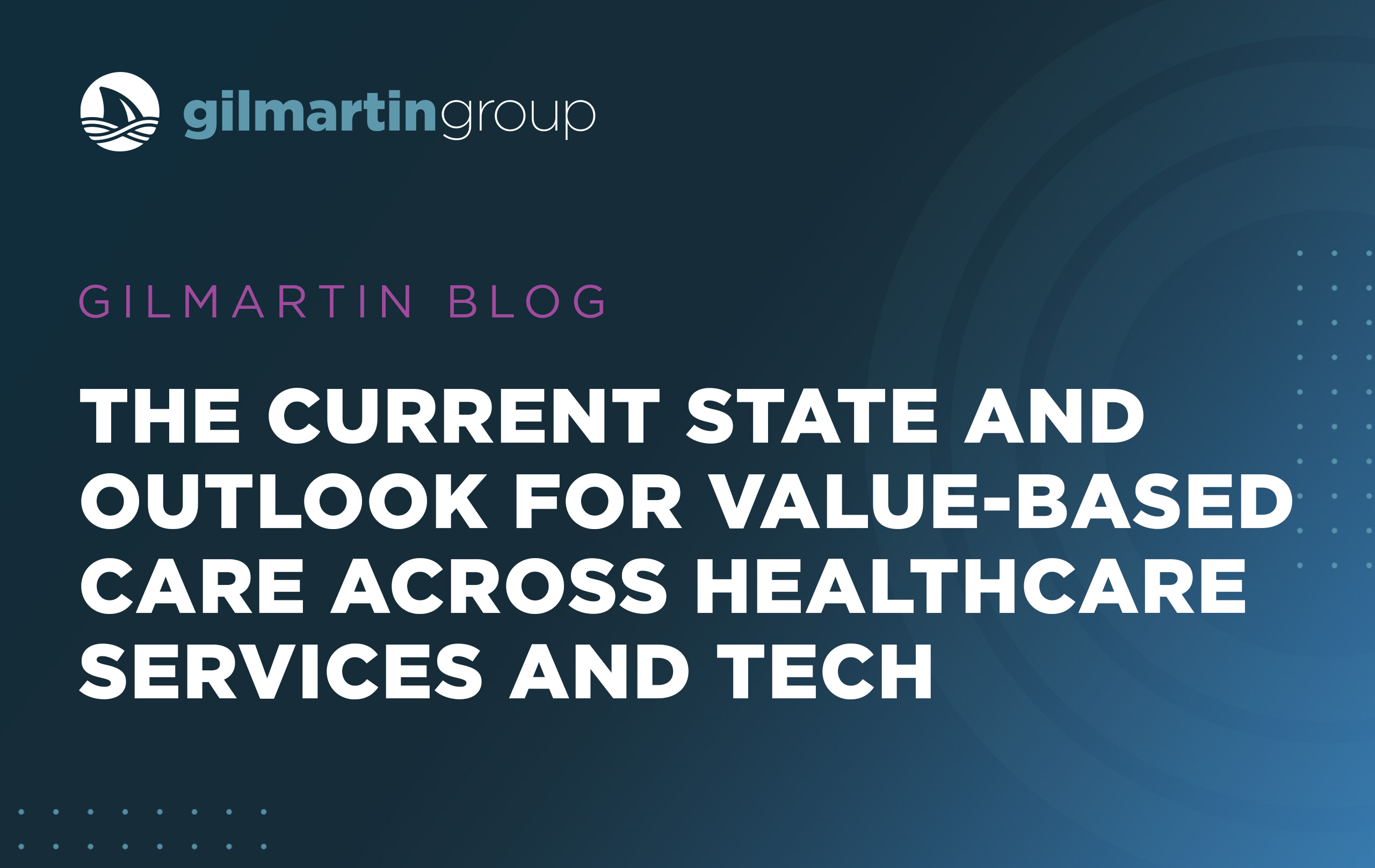On July 11th, 2024, Gilmartin Group held a webinar discussing the current state and outlook for value-based care (VBC) across the healthcare services and tech space, featuring speakers Sean Dodge, Director, Healthcare IT & Digital Health at RBC Capital Markets, and Jailendra Singh, Managing Director, Healthcare Services & Digital Health at Truist. Below are the key takeaways from that discussion.
KEY TAKEAWAYS:
The State of Value-Based Care and Investor Sentiment
Volatility throughout the overall market, and elevated medical cost trends exacerbated by reduced claims visibility due to the Change cyber-attack have brought VBC companies under the microscope. The bull case suggests that current challenges in VBC are merely a result of mispriced risk, rather than fundamental flaws in the model itself, indicating a transient issue. Furthermore, it’s conceivable that just one contracting cycle could be sufficient to reprice and address current imbalances. Conversely, the bear case argues that generating durable cost savings through VBC remains difficult, with skeptics doubting that the Centers for Medicare & Medicaid Services (CMS) will allow the current situation—where Medicare Advantage plans and associated entities are generating outsized margins—to persist. Investor sentiment among long-only investors who entered the space 12-18 months ago has since become more muted, leading to an increased presence of hedge funds. However, lower valuations in the sector are now attracting more generalist investors who previously shied away due to high valuations, broadening the investor base. Fundamentally, the shift from fee-for-service to VBC effectively aligns stakeholders, and VBC is likely here to stay, albeit with some bumps along the road.
Messaging Competitive Differentiation & Investor Sentiment
Investors are primarily focused on three key areas: gaining clear visibility into medical cost trends, emphasizing per-member-per-month (PMPM) margin improvements, and understanding the implications of increasing market penetration in the space. VBC companies should hone their messaging around strategies to better manage medical costs, which could include investments in robust infrastructure and technology, along with increased patient engagement. Additionally, the industry is now recognizing that prioritizing overall PMPM margin over purely increasing funding PMPM is essential for long-term success. This realignment coincides with a change in investor focus towards capital-light strategies, driven by higher interest rates over the past 18-20 months and a desire for quicker paths to profitability. At the same time, the market for VBC models continues to expand, with numerous risk-bearing options available for physicians amongst a large available whitespace. The diversity of VBC models, combined with a relatively low penetration necessitates a nuanced understanding of the different segments and their potential sizes.
The Not-so-Distant Future of VBC
The future of value-based care is evolving rapidly, with a notable proliferation of specialized private companies in areas like chronic kidney disease (CKD). While the public landscape remains primarily focused on primary care, with exceptions like Evolent Health’s specialty care focus in oncology and musculoskeletal care, there’s growing interest in outcomes-oriented models targeting high-cost areas for payers. As the industry progresses, pay-viders and VBC platforms are increasingly developing and relying on technology. Healthcare IT companies are playing an increasingly important role in offering a variety of solutions that target areas like risk-bearing enablement, risk scoring, clinical decision-making support, clinical effectiveness measurement, payment integrity, and revenue cycle management, to name just a few. This technological focus extends to enhancing existing processes, as evidenced by recent acquisitions from companies like Evolent Health and Agilon, which aim to improve data ingestion, system integrations, and documentation efficiency. Of course, Artificial Intelligence (AI) is a key piece of innovation that will drive a reduction in costs and waste while enhancing clinical and operating productivity. The industry is also seeing a heightened level of excitement around Centers of Excellence (COE), indicating a shift towards specialized, high-quality care models.
Private Funding Market and Sentiment in the IPO market
The funding environment for VBC companies in private markets remains robust, despite public market fluctuations, as investors tend to adopt a longer-term perspective rather than focusing on quarter-to-quarter results. This long-term orientation aligns well with the gradual nature of healthcare transformation and the ongoing refinement of VBC models. The IPO market has been the subject of cautious optimism in recent months, with many industry observers eagerly anticipating a resurgence in public offerings. Waystar’s one-billion-dollar raise has been viewed as a promising restart for the IPO market, and as the metaphorical ice begins to break, there’s growing anticipation for increased IPO activity in the latter half of the year. However, the success of this potential wave of IPOs hinges on the reception of the initial companies going public. This initial cohort needs to demonstrate strong financial health, with a particular emphasis on current profitability rather than promises of future gains. Investors and market analysts are focused on unit economics and clear paths to profitability as these factors will likely set the tone for subsequent offerings and overall market confidence.
Overall, while the current public market for services and tech companies in the VBC space remains volatile, the long-term prospects of VBC remain positive. The industry is adapting to new market realities, with a shift towards capital-light strategies, profitability, and specialized care models. Technological innovation and improved data analytics are driving efficiency and effectiveness with a prevailing view that there’s still significant room for growth, particularly in specialized and high-cost care segments. As the IPO market cautiously reopens, the success of initial offerings will be crucial in shaping investor confidence. VBC continues to align with the broader goals of improving healthcare outcomes while controlling costs, positioning it to play a pivotal role in the future of healthcare delivery.
Gilmartin Group has extensive experience working with both private and public companies across the Digital Health & Healthcare IT space. To find out more about how we strategically partner with our clients, please contact our team today.
Authored by: Max Forgan, Associate, Gilmartin Group

